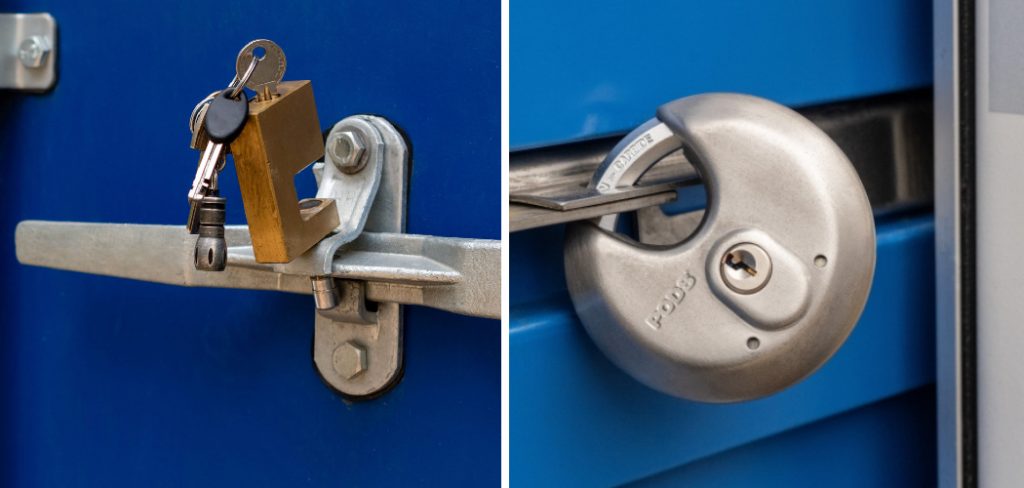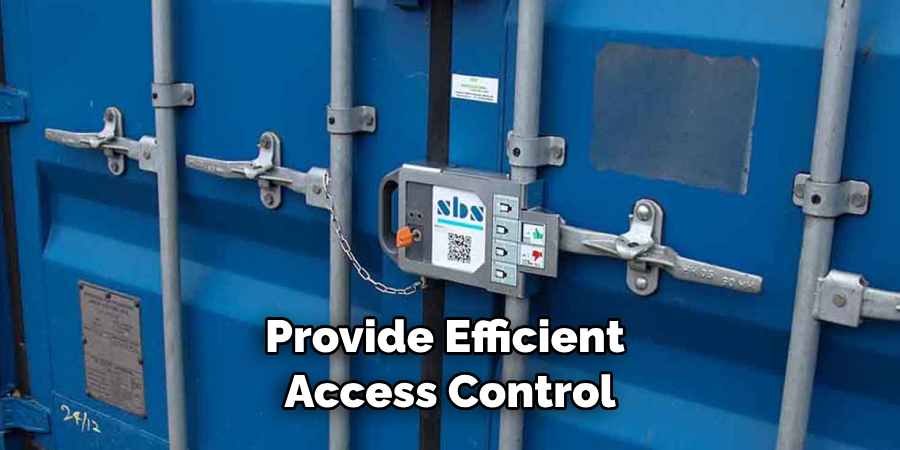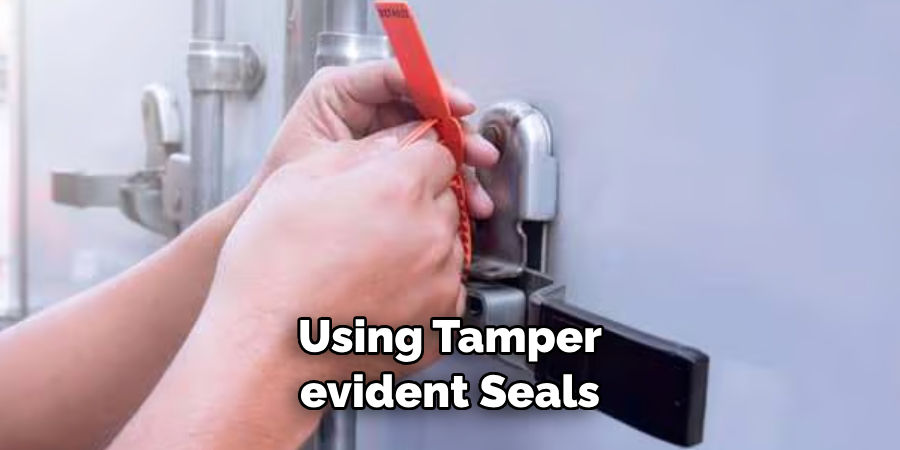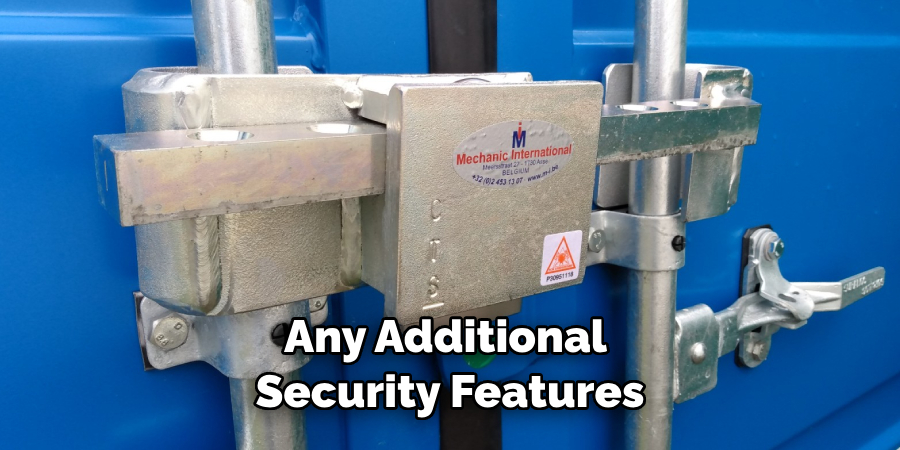Securing your pod container is a critical step in safeguarding your belongings during storage or transportation. Whether you’re storing household items, shipping goods, or moving to a new location, properly locking a pod container ensures that your possessions remain safe and protected. In this comprehensive guide, we will delve into how to lock a pod container.

From selecting the appropriate lock to understanding the security features of the pod container, we’ll provide you with the knowledge and insights needed to secure your belongings confidently. So, whether you’re a first-time pod user or looking to improve your container locking methods, let’s explore the essential steps to lock a pod container securely and keep your valuables intact throughout their journey.
The Importance of Locking Pod Containers
Pod containers are a key element of any system, and it’s important to take the necessary steps to ensure their security. Locking pod containers is an effective way to protect your data and resources from potential threats. By locking pod containers, you can prevent unauthorized access to sensitive information or resources, as well as guard against malicious users who may be trying to gain access to your system. You can also use locking pod containers to limit the actions of certain users, or even restrict what types of activities they can perform on the system.
In addition to security purposes, locking pod containers can also be used to ensure that only authorized users have access to certain parts of the system. This is especially useful in large organizations where multiple individuals may need to access specific features or data. By locking the pod containers, you can ensure that only certain individuals have access to those resources.
Locking a pod container is relatively straightforward and doesn’t require any advanced knowledge of system security. All it takes is setting up certain parameters that will be used for authentication and authorization. There are several methods of securely locking a pod container, however, the most commonly used methods are using a user name and password or an access token.
Different Types of Locks Suitable for Pod Containers
When it comes to locking a pod container, there are some different types of locks that can be used. Here is an overview of the most common types:

- Mechanical Locks: These provide physical security and are one of the oldest methods for securing a container. They are typically used in combination with other security measures such as padlocks or electronic locks.
- Electronic Locks: These use a combination of keypad, card, and other biometric systems to provide efficient access control. They are typically used in combination with other security measures such as CCTV or alarm systems.
- Padlocks: These provide physical security but can easily be cut off if the right tools are available. It is important to make sure that your locks are of the highest quality to prevent them from being easily broken.
- Combination Locks: These provide another layer of security and can be used in combination with other measures such as keypad, card, and biometric systems. They are more secure than mechanical or padlocks but also require a code to open them.
- Security Cables: These are designed to secure containers together and provide additional protection against theft. They can be used in combination with other security measures such as locks or security systems.
No matter what type of lock you choose for your pod container, it is important to make sure that the lock meets your specific needs and is installed correctly for maximum security.
10 Steps How to Lock a Pod Container
Step 1: Choose the Appropriate Lock
Before you begin the process of locking a pod container, it’s essential to choose the right type of lock. Pod containers typically come with options for padlocks, combination locks, or cylinder locks. Consider your specific needs, preferences, and the level of security required for your belongings. Padlocks are common and versatile, combination locks offer convenience, and cylinder locks provide enhanced security.
Step 2: Inspect the Container

Before placing any belongings in the pod container, thoroughly inspect the container for any damages, leaks, or holes. Address any issues to ensure that your belongings will be stored or transported in a secure environment. Check the locking mechanism and the door to ensure they are functioning correctly.
Step 3: Clear and Organize Your Items
Organize and pack your belongings efficiently within the pod container. Group similar items together and use appropriate packing materials to ensure they are well-protected during transportation or storage. A well-organized container makes it easier to lock and secure your belongings effectively.
Step 4: Install a Hasp and Clasp System
Consider installing a hasp and clasp system on the pod container doors. A hasp provides a sturdy metal plate to which a padlock can be attached, enhancing the security of the lock. Ensure that the hasp and clasp are installed securely to prevent tampering or forced entry.
Step 5: Place Padlocks on the Hasp
If using padlocks, place them through the hasp and clasp system, ensuring they are securely locked. Padlocks act as a primary line of defense against unauthorized access. Choose padlocks that are durable, tamper-resistant, and appropriate for the hasp size.
Step 6: Consider a Shrouded Shackle Padlock
For added security, opt for shrouded shackle padlocks. These padlocks have a protective cover that makes it difficult for potential intruders to cut or tamper with the shackle. Shrouded shackle padlocks provide an extra layer of protection for your pod container.
Step 7: Use Tamper-Evident Seals

Consider using tamper-evident seals to further enhance the security of your pod container. These seals are designed to show signs of tampering, providing a visual indicator if someone attempts to break the seal and gain unauthorized access to the container.
Step 8: Implement an Alarm System
For high-security needs, consider installing an alarm system on the pod container. Modern alarm systems can be integrated with your locking mechanisms, providing real-time alerts in case of unauthorized access attempts. Alarm systems act as a proactive measure to deter theft or tampering.
Step 9: Document and Photograph the Locked Container
Document the locked pod container’s condition and take photographs for your records. This documentation can be useful for insurance purposes and to verify the state of the container and its contents before and after transportation or storage.
Step 10: Maintain Regular Checks and Maintenance

Regularly check the condition of the lock, hasp, clasp, and any additional security features on the pod container. Perform maintenance to ensure they are functioning correctly and continue to provide the required level of security. Regular checks and maintenance help maintain the integrity of the locking system over time.
Things to Consider When Locking a Pod Container
When locking a pod container, it is important to consider the following factors:
- Security: The security of your container should be your top priority when locking a Pod Container. Make sure that you are using strong passwords and secure encryption algorithms to protect sensitive data. Additionally, consider deploying additional measures such as network access control lists (ACLs) or identity and access management (IAM) solutions.
- Availability: You should ensure that your container is always available to provide the best user experience. This includes making sure that the container is not overloaded with other tasks, as well as ensuring high uptime rates by monitoring your container’s performance.
- Scalability: As your business grows, your container should be able to scale with it. Consider using an autoscaling solution that can dynamically increase and decrease the resources in your container based on demand.
- Fault tolerance: Your container should be able to withstand any unexpected problems or failures. In order to ensure continuity, consider adding redundancy layers such as multiple backup solutions in addition to your existing infrastructure.
Safety Precautions for Locking a Pod Container
It is important to bear in mind that locking a pod container should be done with caution. Before attempting to lock any pod containers, ensure you are familiar with the concepts of security and secure coding practices.
When working with locked pods, it is essential to follow best practices for securing your applications and data. This includes ensuring that all appropriate authentication measures are taken, as well as implementing security measures such as encryption, authorization/access control, and logging. Additionally, it is important to understand the implications of locking a pod container: if a malicious user were to gain access to the locked container, they could potentially gain access to sensitive data or manipulate your application in ways that would be detrimental.
Conclusion
In conclusion, while securing your pod containers with a password can seem daunting, knowing how to lock a pod container is essential for keeping your data secure. As we have seen throughout this post, controlling who has access to your pod containers is crucial in mitigating risks and preserving the integrity of your system.
This post has provided clear and comprehensive approach to locking your pod containers which can enable you to protect your system and keep away any malicious actors attempting to gain access to confidential data. Therefore, by taking a few simple measures such as setting up user authentication and strong passwords, you’ll be well on your way to ensure that no unauthorized parties may penetrate into the system.
About
Safety Fic is a distinguished figure in the world of Diy design, with a decade of expertise creating innovative and sustainable Diy solutions. His professional focus lies in merging traditional craftsmanship with modern manufacturing techniques, fostering designs that are both practical and environmentally conscious. As the author of diy, Safety Fic delves into the art and science of Safety Fic-making, inspiring artisans and industry professionals alike.
Education RMIT University
(Melbourne, Australia) Associate Degree in Design (Safety Fic) Focus on sustainable design, industry-driven projects, and practical craftsmanship. Gained hands-on experience with traditional and digital manufacturing tools, such as CAD and CNC software.
Nottingham Trent University
(United Kingdom) Bachelor’s in diyfastly.com and Product Design (Honors) Specialized in product design with a focus on blending creativity with production techniques. Participated in industry projects, working with companies like John Lewis and Vitsoe to gain real-world insights.
Publications and Impact
In diy, Safety Fic his insights on indoor design processes, materials, and strategies for efficient production. His writing bridges the gap between artisan knowledge and modern industry needs, making it a must-read for both budding designers and seasoned professionals.
